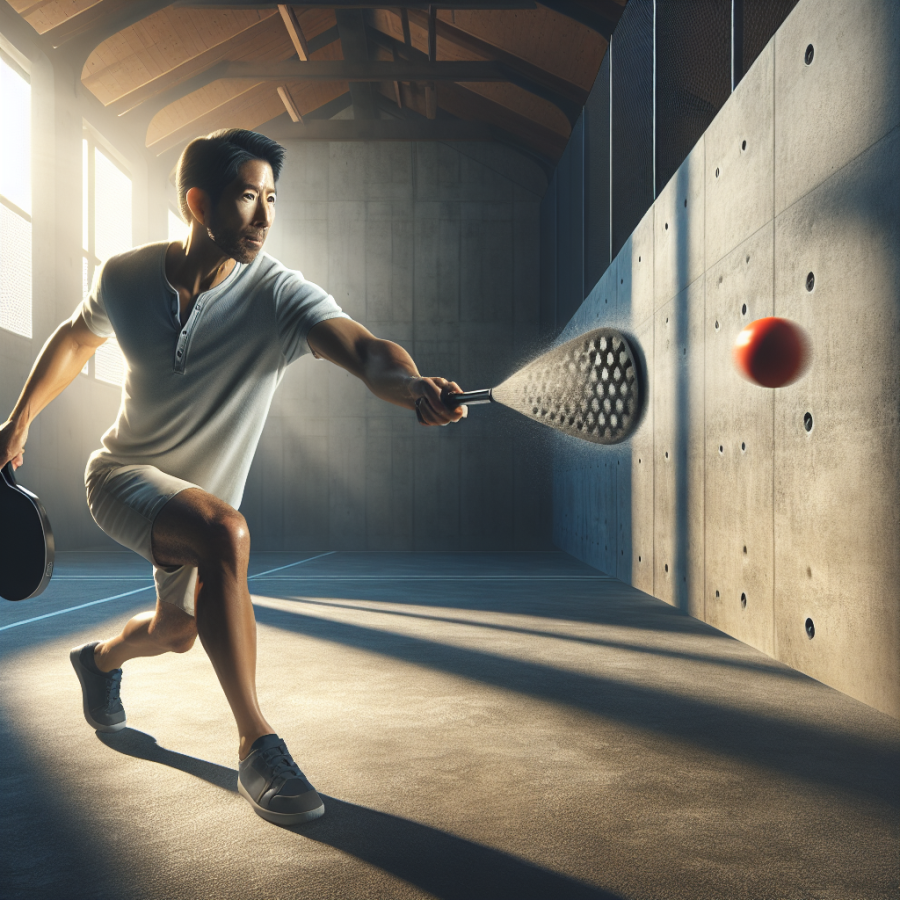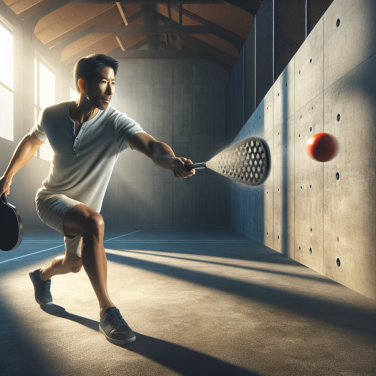Enhancing Your One-Wall Paddleball Skills Through Drill Progressions
Paddleball, especially the one-wall game, requires a unique set of skills that can be honed through specific drills designed to improve various aspects of play. To elevate your game to the next level, it’s important to set up a structured drill progression that focuses on the different competencies necessary for solo paddleball mastery.
Firstly, targeting ball control is crucial. Begin with simple front wall drills where the objective is to hit the ball to specific areas on the wall with varying degrees of force. You can start by aiming high and work your way down to lower targets to simulate different shot types you would execute in game scenarios.
Moving forward, incorporate drills that help enhance your footwork and positioning. Set up cones or markers in the court to simulate ideal positioning, and work on moving quickly and efficiently to these spots before playing your shot. You can progress these drills by increasing your speed and incorporating directional changes to mimic the unpredictable nature of a real match.
Endurance and speed are keys to improving your one-wall game. Engage in rally drills where you continuously hit the ball against the wall, focusing on maintaining intensity over longer periods. To add complexity, mix in sprints or side-steps between shots to boost your cardiovascular fitness and your ability to recover quickly between points.
Accuracy under pressure is another fundamental skill set. Practice hitting shots right after a sprint to the front wall or after completing a set of burpees. This drill emulates the stress of a match and improves your composure and shot precision when fatigued.
Targeted shots are essential. Practice drills like 'kill shots' where you aim to hit the ball as low on the wall as possible, making it difficult for an opponent to return. Start with a set number of successful kill shots before introducing variability by randomly calling out different shot types (like 'pass shots' or 'ceiling shots') during the drill.
Defensive skills shouldn’t be neglected. Work on 'dig' drills which practice retrieving difficult shots such as low balls or those aimed at the corners. This not only improves your defensive play but also teaches you about shot tendencies you can exploit in opponents when you play offensive.
Lastly, hand-eye coordination is a necessity. Juggle two balls against the wall, alternating hands or try hitting the ball with different parts of the paddle. Fine-tuning the coordination between your eyes, hands, and paddle will give you a significant edge, allowing for more nuanced shots and better reaction times during play.
Read also:
Gungdo: The Art of Korean Traditional Archery Unveiled
Developing Strategic Play for Solo Paddleball Success
Solo paddleball, though often overshadowed by its more popular racket-sport cousins, presents players with a unique set of challenges and strategic opportunities. Central to success in this one-wall game is the development of a strategic play that capitalizes on one's strengths and exploits the opponent's weaknesses.
Mastering the solo paddleball game requires a comprehensive understanding of shot selection. For beginners, it may be tempting to focus solely on power, assuming that the harder they hit the ball, the better their chances of winning a point. However, seasoned players understand that strategy, rather than brute force, often dictates the outcome of the match.
Key to strategic play is the ability to control the tempo of the game. By varying the speed and angle of shots, a player can keep their opponent guessing, preventing them from settling into a rhythm. This unpredictability can force errors or create openings for aggressive plays. For instance, a soft shot played close to the wall may necessitate a weak return from the opponent, setting up the opportunity for a more decisive strike.
Another important aspect of strategic solo paddleball play is positioning. Good players position themselves in a way that covers the majority of the court while also being able to anticipate and reach the opponent's return shots. This involves mindful movement and an awareness of one's own body in space, always ensuring that there is balance and readiness to move in any direction.
Furthermore, the solo paddleball player must be adept at reading their opponent. This includes recognizing patterns in the opponent's play, understanding their preferred shots, and identifying any weaknesses that can be exploited. For example, if an opponent struggles with low shots to their non-dominant side, it would be strategic to target that area until they prove they can defend against it competently.
Incorporating spins and angles into gameplay is yet another layer of strategic depth. Rather than hitting the ball straight back to the opponent, players can use sidespin or underspin to make the ball behave erratically upon contact with the wall, thereby complicating the return shot. Angled shots that hit close to the side walls can widen the court and stretch the opponent's reach, often leading to advantageous scenarios for the player who can execute these shots well under pressure.
Learning to manage and exploit the psychological aspect of the game is equally significant. The solo nature of paddleball means there's no teammate to lean on when the going gets tough.




